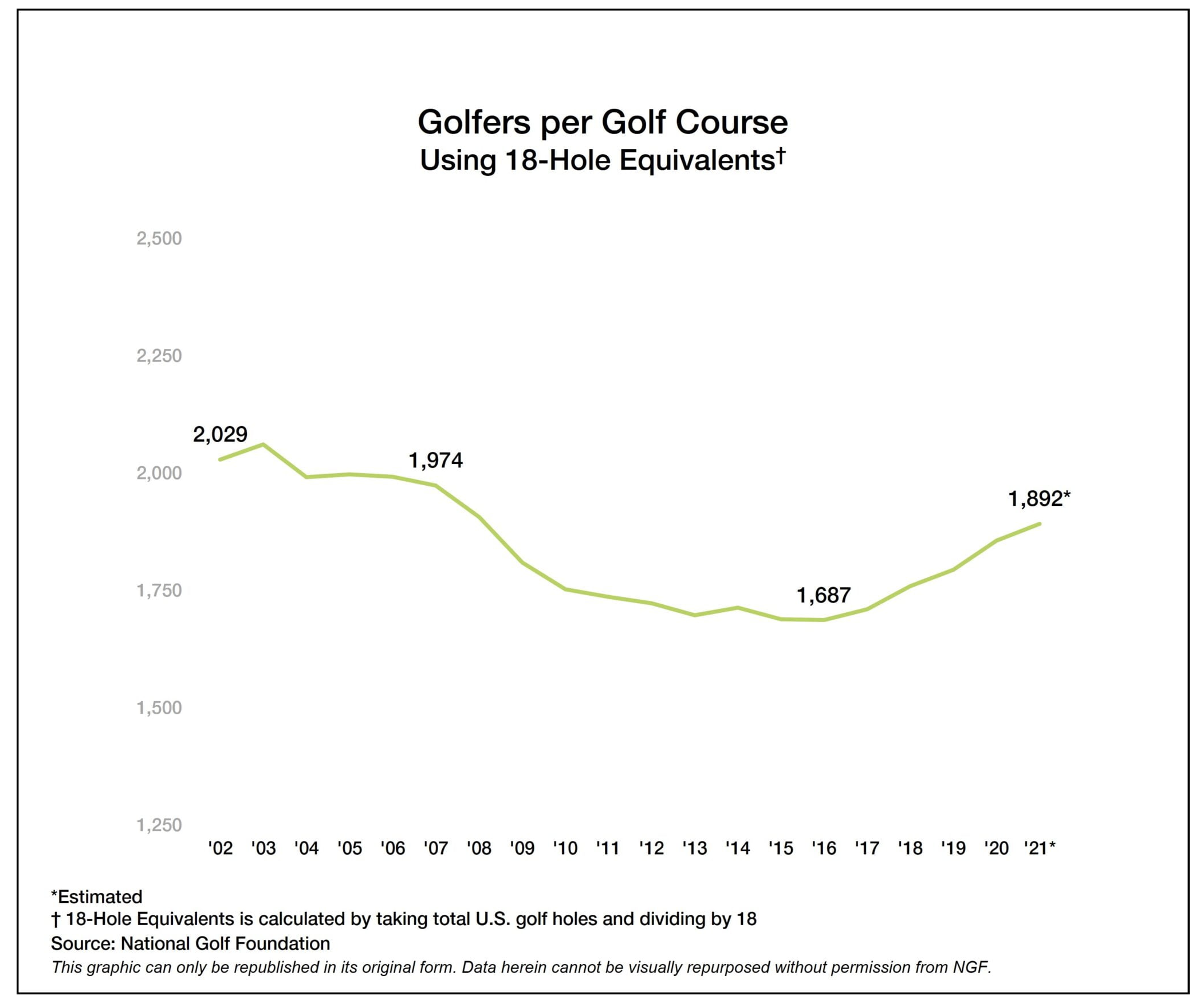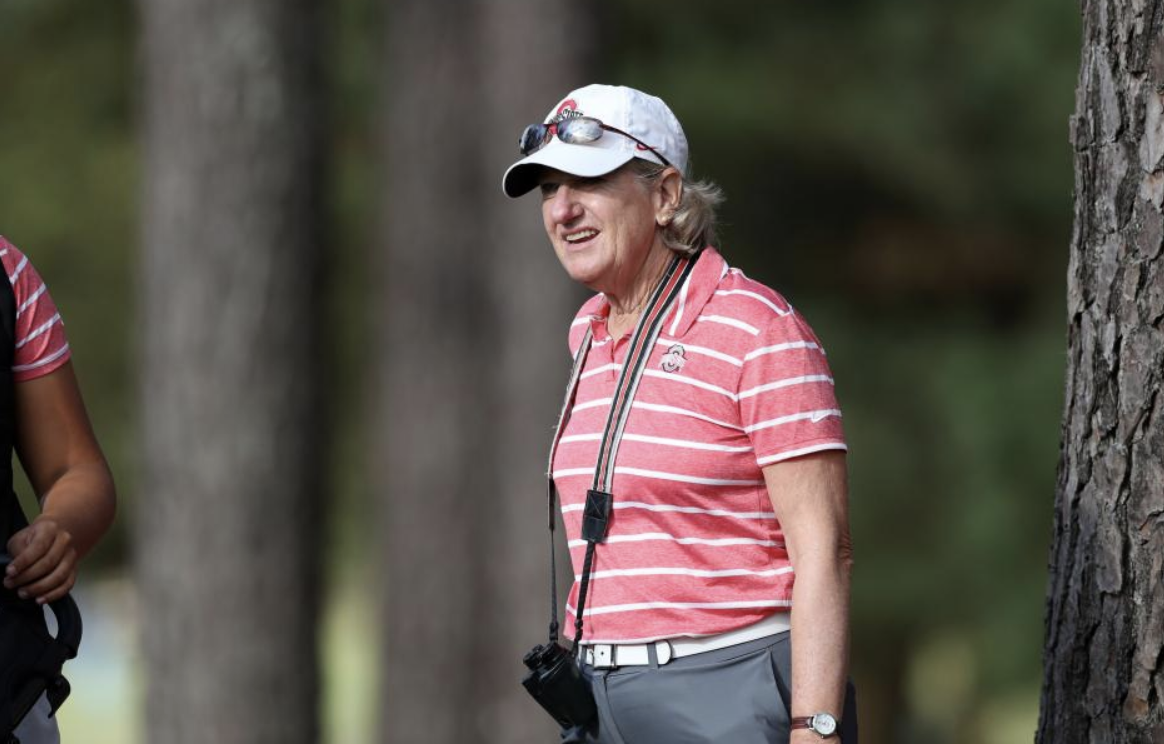Having managed to evade any hard Q&A sessions since The Players—we don’t count Strategic Alliance pressers here—PGA Tour Commissioner Jay Monahan answered questions on an array of pre-Tour Championship topics. He made news with a new fan code-of-conduct-policy, a mix of news related to the Asia swing, and finally answered questions about the Tour’s secret Player Impact Program, aka, the in-house trust fund for favorite sons.
Given that Monahan ushered in the PGA Tour’s relentless Live Under Par campaign early into his tenure—come out, get drunk, be a young demographic we’re desperate to court, express your inner douchey bro, make yourself part of the event by being loud, and share it all on social—I expected a trace of remorse. Not even a hint of responsibility accepted for deteriorating fan behavior.
But you don’t make $9 million a year taking blame or even acknowledging anything is actually wrong.
With that, let’s go to the transcript, starting with this from his prepared remarks:
Looking ahead, the PGA TOUR is in a position for unprecedented growth over the next 10 years, starting with the 2021-22 season. Next season official prize money will increase by approximately $35,000,000 and the FedExCup Comcast Business TOUR top-10 bonus pool combined will grow by $15,000,000 to $85,000,000. This total of $633,000,000 in comprehensive earnings marks an 18 percent increase year over year.
But we couldn’t wait to use the pandemic to lay off some low-paid people. Wonder what else those people who just had to go shared as a trait?
Anyway, buried the lede there on the Comcast thingy getting a purse bump. Really great news for fans. Imagine if we could just get Comcast to take some of that money and put tracer on the 18th tee of a playoff event? The game would really grow!
We're also excited to kick off our new domestic media rights agreements with CBS, NBC Golf Channel, and ESPN in 2022. These media companies share our vision for the future and these landmark partnerships that run through 2030 will be a major win for our fans as we expand and innovate our content and its delivery.
That’s pretty light on detail.
The golf industry is working together like never before and despite the challenges of the pandemic, the continued growth we have seen in recreational participation and in growing and diversifying our sport, our global game has never been stronger. Thank you, and thank you all for your coverage throughout the year. On behalf of the PGA TOUR, I and we appreciate all you do and the sacrifices you make to cover us throughout this year, especially across this Super Season.
Yes, all eight of you invited to the call.
Wait, is there a tension in the air? Is someone looking more uncomfortable than normal?
Before I open it up, Laura, to questions, I just, I wanted to take a minute to address a topic that's been top of mind lately for our players, fans, and of course, for those of you in the media. I'm talking about fan behavior and the interaction with our athletes, when that behavior crosses the line and what we should all be doing to address it when it does.
Bet on the next Baba Booey with a preferred PGA Tour gaming partner? Wrong!
It's been a long season, yes, but it's been a fantastic season. 50 events, THE PLAYERS Championship, six majors, the Olympics, these four consecutive playoffs, two to start the FedExCup playoffs and here we are at the TOUR Championship. It's been historic and compelling at every single turn.
Your honor, direct the witness to answer his own question and to please specify between Playoffs and sudden-death playoffs.
All of that on the heels of a lot of pent up demand with people stuck at home separated from their favorite sports and athletes like never before due to COVID and the various and necessary health and safety protocols in place to ensure we can get back to playing. It's been frustrating at times for all of us and then we get the opportunity to finally engage with our favorite sports or teams or players.
And we’ve taken living under par too far?
Well, I think we can all agree that we have seen issues as of late across the sports landscape where that pent up demand plays out in an ugly way. Golf is not immune from unfortunate and disruptive behavior, although I would say that we do have the very best fans in the world. This is about just a few bad actors. And for the record, this isn't about any one particular player or one particular incident,
Of course not, no one thought of such a thing…
but in some situations it's apparent that we have gotten away from the very civility and respect that are hallmarks to our great game.
Where could fans get the idea they were were as much the story and should come out to tournaments and share their lamest yells, taunts and even record it?
We began working on an updated fan code of conduct program in 2020, but put it aside last summer when we were playing without spectators and needed our focus to be on implementing the complicated yet necessary health and safety plan.
Riiiiiiiiiiiiiiiiiiiiiggggggggggggghhhhhhhhhhhhhhhhttttttttttttt.
Once we began returning to normal capacity, we made it the highest of priorities to reinforce an environment at PGA TOUR events that allows for everyone to enjoy in a safe environment, and that is spectators players, volunteers, literally everybody.
New slogan: Talk Under Your Breath But Please Bet.
We have to be intentional about our expectations for fan behavior and I believe our fan code of conduct does that.
Intentional! Well, at least we know legal got their hands on these remarks.
By coming to a PGA TOUR event, you're expected to contribute to a welcoming and safe environment by refraining from and reporting any unsafe, disruptive, or harassing behavior. Comments or gestures that undermine the inclusive and welcoming nature of the game will not be tolerated, nor will any harassment of players, caddies, volunteers, officials, staff, or other spectators.
Media, too, right?
Fans who breach our code of conduct are subject to expulsion from the tournament and loss of their credential or ticket.
Live Under Fear of Expulsion!
Now, I would ask our fans, again, the very best fans in the world,
Yeah we got that the first time…
to take a moment and think about what it means to be a golf fan and to enjoy a PGA TOUR tournament. We're going to be leaders in this space. We're going to show everyone how easy it is to enjoy yourself at an event while also respecting the athletes in the field of play and the fans around you, many of whom are families with young kids who have a chance to be lifetime fans of the game themselves.
No you tried to take a new lead on that front and failed, miserably. Judging by the Live Under Par firesale and bon fires, you’re reassigning the folks who approved that, right?
Quite honestly, we should expect nothing less from each other, whether we're at a golf tournament or elsewhere in life.
The PGA Tour leading the way on civility after years of tolerating mashed potatoes and whitewashing the rare player run-ins with incivility? Rich!
Now to the questions…
Q. If I can just follow up on your last as it applies to the very real world situation with Bryson, would "Brooksie," would that qualify as [harassing] behavior?
JAY MONAHAN: I'm sorry, you broke up there.
Q. Sorry. Would "Brooksie" classify as harassing behavior when it's said to Bryson on a golf course?
JAY MONAHAN: Yes, and the reason I say yes is, you know, the barometer that we are all using is the word "respect," and to me, when you hear "Brooksie" yelled or you hear any expression yelled, the question is, is that respectful or disrespectful? That has been going on for an extended period of time. To me, at this point, it's disrespectful, and that's kind of behavior that we're not going to tolerate going forward.
Just think, some day historians will be looking at this transcript and saying, wait, “Brooksie” was grounds for ejection? Was that like some sort of dirty word? And why wasn’t it Brooksy?
Q. To follow up on that, have you talked with Bryson and Brooks and have you asked them to sort of ratchet down the, you know, kind of the back and forth that's going on here for the last few months?
JAY MONAHAN: I've had conversations with both players. These observations go back to pre-COVID as it relates to general concern around code of conduct at our tournaments and they certainly exist prior to that analysis that the team had led,
Teams were leading this long before the pandemic. Teams!
and so -- and I've been out over the last, at a lot of our tournaments this year, particularly since our return to play, and this issue isn't specific to one or two players.
And it sure seems like those pre-COVID chats you had with Brooks really resonated.
I think it's an opportunity to reassess overall civility at our tournament and fan behavior and reset the expectation through our fan code of conduct.
That's something that we have identified. It's something that I've talked to not only those two players, but a lot of our players about. It's something I've talked to our partners in the industry about, and we have all agreed that together we have got to come together and demonstrate what is truly exceptional about our game. And if you go back to the history of the game, the values of honor, integrity, respect that have been central fabric to the game since the point in time, our expectation is that that's what we're going to experience at our tournaments.
You see, problem is, lots of people recognized this but you wanted to chase a younger demographic and you surrounded yourself with too many marketing flacks who don’t really even like golf, thought it needed to become a party lifestyle brand, and it spiraled.
And I made the point earlier about families and kids, and we have volunteers that are giving so much of their time, and the game has never had more people coming into enjoy the game and experience it than we have had really over these last several months, and we want more people to come in. We just want to make certain that everybody can have a safe, healthy, and enjoyable experience, whether you're inside the ropes or outside the ropes and that's what we're intending to do.
Well that’s great, something most of us knew a few years ago and as it should be at a golf tournament. Let’s hope you catch the culprits behind that whole other dark chapter that led to this mess they put you in.
Let’s move on to Brooksie…Bryson.
Q. What are your concerns about having a player in Bryson, who very well could win this thing and who is one of the biggest stars on TOUR, not, not communicating with the media now, and what are his responsibilities in addressing some of the issues that you've addressed as far as fan conduct or anything else that comes up over the course of a tournament?
JAY MONAHAN: Yeah, listen, I think that as it relates to Bryson, listen, Bryson is a star. He has fascinated golf and sport fans around the world since our return to golf. He's also a young man that's growing and evolving, not just on the golf course, but off the golf course.
Yeah he’s building a new home, designing his 2022 Bentley, losing the weight he quickly gained, reading up on MRNA…
And I would just say to you that I look at this as a point in time. I don't think this is the way things are going to be for a long period of time. I'm hopeful that we'll get back to a steady cadence of communication that he'll have with the media.
Steady cadence of communication. Take that Finchem!
But he's working through some things and he's going to have my and our support as he continues to do so.
Well, can’t blame the media for violating his privacy.
Let’s take a break from the heavy stuff and read some good old fashioned gobbledygook.
And, listen, I think that as it relates to general fan behavior and any individual's role in it, I take it, I take that on as an organizational responsibility. We have had challenges in the past. We'll have challenges as we continue to go forward. And so long as we build the right systems, we effectively communicate with every one of our tournaments, we are planning and preplanning effectively, the marketplace knows the expectation when we're on-site, I think that we're going to, you know, we're going to get back to, we're going to get back to a great environment. We have a great environment. We'll continue to improve our environment at our tournaments going forward.
The shot clock expired at marketplace, sir. Back to the serious stuff.
Q. Have you ever considered, as they do in tennis, any type of a fine for players not fulfilling media obligations if they are indeed media obligations?
JAY MONAHAN: I would just say to you, in any instance, we're always going to focus on the player, the relationship with the player, understanding the player, trying to work with them to get to the right place and try and understand what's going through their heads.
You’re a golf tour, not a psychiatric hospital. But at least these independent contractors get hands-on support from their workplace.
And so a fine, I'm not sure what that is going to do for us in the long run.
Raise a little more for charity?
Ultimately we want the player presenting his best self when he's in front of the media, when he's in front of fans, and that's ultimately the goal for any player that's in a situation like that.
Lofty goals.
Q. It's my understanding that the player impact program will run through the end of the year, that it won't be a seasonal thing. I'm curious, without giving a specific example of a player, but I'm sure you've seen the list, can you give me an example of maybe content or an engagement that counts as added value when it comes to the metrics that you're using?
JAY MONAHAN: Well, we're using five different criteria, to all of which are equally weighted. And you look at Nielsen, your Saturday and Sunday time on television, to Google Search to Meltwater, to MVP Index, and to, bear with me here, it's at the back of my head, I'll come up with it. But each of these areas lead up to a player's ranking. And the bottom --
Q. Q Rating.
JAY MONAHAN: Sorry?
Q. I believe Q Rating was the one you were thinking of.
JAY MONAHAN: Q Rating, yes.
Who needs a Q rating when you have a Meltwater and MVP Index?
We really need to get clarification if that Saturday/Sunday time includes Playing Through and Eye On The Course time. Could swing the race!
The bottom line is when you look at any of those metrics, it's all about, for us, it's all about getting our players to engage in our game, help grow our TOUR, and help grow their own respective brands. And if you look at what drives engagement, it's on-course performance, and that's, that is part of the basis for the way the Player Impact Program was developed. You've seen how everybody's performed this year, and I think as we look at it and you think about the way that fans and the major story lines on the way fans have engaged, players have engaged fans through those channels, I think it's fairly intuitive.
Great, can’t wait for you to share the standings!
The point I would make is that we're up, you know, this year we're up 41 percent when you look at cross-channel consumption. We're up across every metric.
Let’s just all pause for a moment and remember our friend Tim Finchem who, in his prime, with his hair at its most dialed-in shade of North Florida auburn, never dropped a cross-channel consumption on us. Special moment here in PGA Tour history. Go on…
And I think that's, first and foremost, because of the quality of play, but I also think we're benefiting from some really powerful engagement from our players day-to-day and doing the things I just described.
Agreed, Brooks has been amazing this year.
Q. You kind of touched on some of this earlier, still having to endure the pandemic issues. Any consideration to bringing testing back for the players and support people or whatever on-site when the new season begins?
You get more cases if you test, haven’t you heard?
JAY MONAHAN: I think that the easiest way for me to answer that is that we're at, we need to respond to the realities of the pandemic and ultimately for us, that's a matter of working with our medical experts,
It went on and on. The answer was a no testing. Not even for bilateral pneumonia.
Let’s move on to the WGC HSBC, officially cancelled for 2021 according to Monahan, but the ZOZO will return to Japan after a one-year stop at Sherwood.
And about those World Golf Championships?
I think, to answer your question, you know, I see the WGCs continuing to play an important role in our schedule, but I also think you know that when you add our European Tour strategic alliance, when you have an organization that's continuously challenging itself to improve its product, improve its schedule, continue to provide the single greatest platform for top players in the world, everything becomes in play when you're going through how you might get there.
So, unfortunately -- with certainty, I can tell you that those two events are carrying forward, and long-term, I just think that we're going to continue to make them an important part of our consideration.
“For our consideration” is the new RIP.
Q. Could you confirm what Rex said, that the PIP is going to be through the end of the year? I'm not sure you really answered that part when he brought that up. And also, is the quote/unquote winner of this or the people that are in the money, so to speak, is that ever going to be made public?
JAY MONAHAN: It is through the end of the year, and we don't have any intention on publicizing it.
Such brevity!
Q. Why is that?
JAY MONAHAN: To us, it's a program that we created, was created by our players, with our players, for our players, and that's, that's what we decided that we were going to do when we created it.
For our players, by our players, to make our stars not leave us for another tour.
Q. On a scale of 1 to 10 with 1 being not at all and 10 being the apocalypse is upon us, how concerned are you that there could be a renegade tour starting in the next year or so?
I would have gone Defcon but then I can never remember if it’s 1 to 5 or 5 to 1. Anyway, he went the “I’m just focused on the business of my tour” which is, of course, total nonsense…
JAY MONAHAN: I'm a hundred percent focused on our business and excited to be here at the TOUR Championship to complete this unbelievable season, to go into 2021-2022 with not only an incredibly strong schedule with great committed tournaments, but to be fully sponsored coming out of, coming through a pandemic, for us to have record consumption over the course of this year, taking that momentum into next year, for the value of the platform that these players are continuing to play on, for that to continue to grow, for the close work and relationship we have with our players and the way that we're going to continue to not only evolve our TOUR, but also evolve our game.
No, you stay out of the game. Other folks have it covered. We have strong proof you are not to be trusted. #liveunderpar
So that's what I, you know, that's what I have been focused on, that's what I'll continue to be focused on and I think in life you always have to be cognizant of, No. 1, there should be zero complacency to anything you do and No. 2, someone is always going to try and do, someone is always going to try and take, compete and take something away from you. And I've operated that way every day of my life and I think that's why, with the great team I have surrounded by me, we're going to continue to grow this great TOUR.
Q. Would that be a not at all?
JAY MONAHAN: I told you what I'm focused on. So it's, yeah, that's what I'm focused on.
Don’t get chippy! We’ve got a new code of conduct.
























